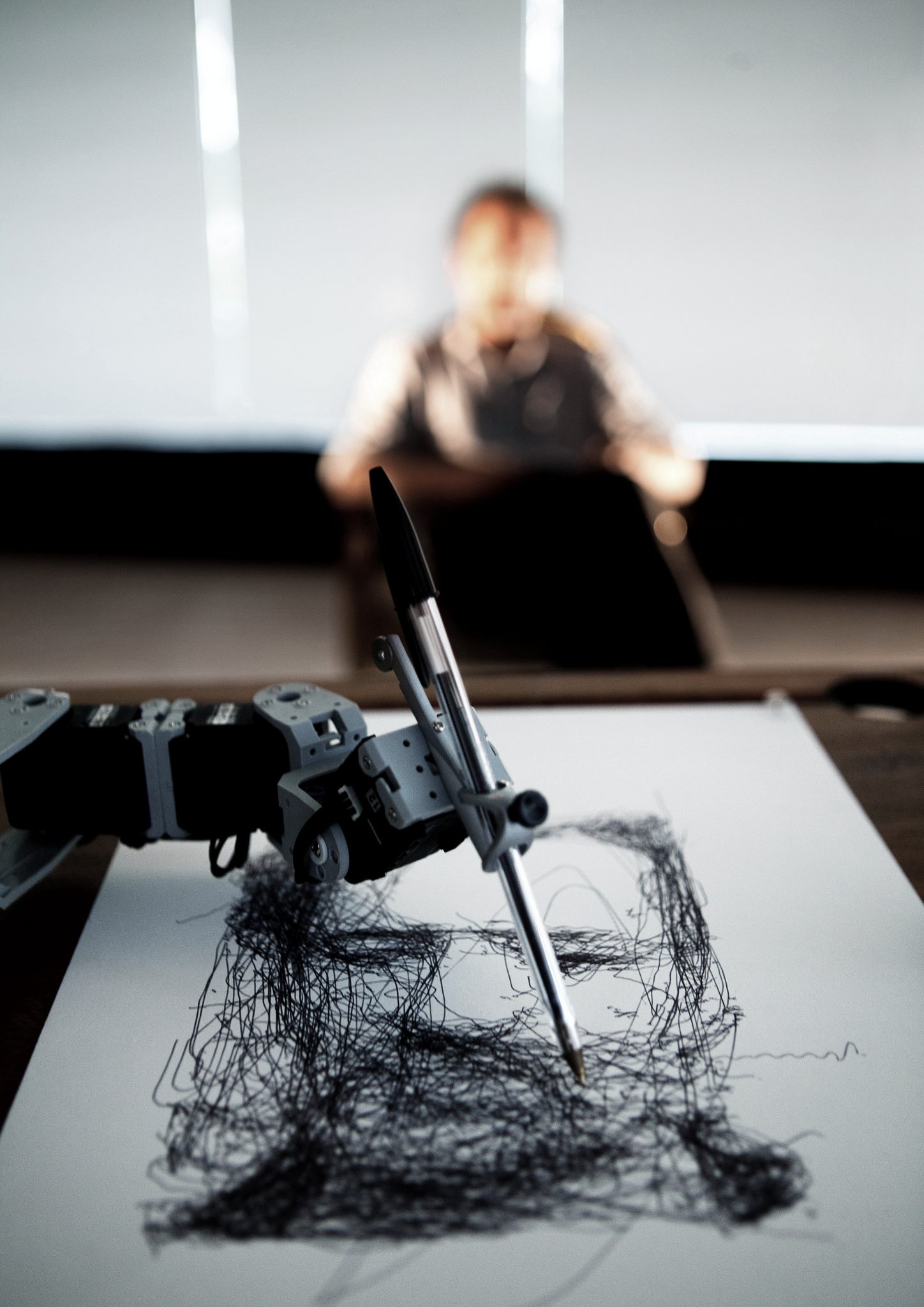“I don’t like technology,” says Jacopo Etro, “but I am fascinated by it.”
Art has always served as a way of addressing issues as they swim into the wider consciousness, so if it is at first surprising that the creative director of Etro, a family-run label historically associated with hand-drawn designs and a bohemian sensibility, should choose to celebrate its 50th anniversary by investigating the relationship between creativity and advanced technology, then it also suggests that the business is looking towards a future in which the two cannot be separated.
That connection has for 20 years preoccupied the French artist Patrick Tresset, a painter-turned-roboticist whose work is now on display at Etro’s London showroom. On the first floor is a curious arrangement of props suggesting an absurdist play set in a retro-futuristic dystopia: a simple wooden chair beneath a bright spotlight and, a couple of feet away, an old-fashioned schooldesk in the corner of which is curled up a mechanical arm, a miniature version of the welding arms familiar from automated production lines, with a ballpoint pen in its claw. When a person takes the seat, a small digital camera attached by an articulated stick to the table swivels to catch the sitter’s eye and, after a few seconds of twisting and turning, turns its gaze towards a sheaf of paper on the desk. At which point the drawing arm comes to life, moving up and down to make short, scratchy penmarks onto the page. The process continues for several minutes, building up an expressionistic portrait that bears little resemblance to what one expects of a mechanically reproduced image.
It’s natural to assign characteristics to what are in fact pre-programmed parameters: the artist describes the work of a robot that makes quick, short marks as “nervous”, for example. This impression of personality raises questions about what we identify as human in a work of art, in a pattern, in a design.
Etro was immediately attracted to the surprising “liveliness” of the portraits produced by Tresset’s robots because he recognised in it something of what we tend to call the creative impulse, the “personality” that differentiates a straightforward copy from an interpretation. Tresset explains that his move into robotics was an attempt to recapture some of the creativity he felt he could no longer achieve as a painter. The artist had grown increasingly frustrated by his own inability to be “spontaneous” in his gestures, and so worked to develop a robot that could render marks on paper without any of the conscious inhibitions that he felt were restricting the “freedom” of his own markmaking. That might seem counterintuitive – we naturally think of the creative impulse as diametrically opposed to automatism – but it has a long history, not least in the automatic writing of Surrealism, for which the author sought to bypass the prejudices of the conscious mind.
And indeed it’s difficult to resist the temptation to anthropomorphise Tresset’s uncanny aggregations of eyes and arms, which ArtReview first encountered as part of a collaboration with Goshka Macuga at the Fondazione Prada in 2016. It’s natural to assign characteristics to what are in fact pre-programmed parameters: the artist describes the work of a robot that makes quick, short marks as “nervous”, for example. This impression of personality raises questions about what we identify as human in a work of art, in a pattern, in a design. Tresset’s robots present an interesting case study in the difference between reproducing a theme and customising or elaborating on it, what it means to be imaginative when artificial intelligences are increasingly capable of mimicking (arguably engaging in) the creative process, and how it is possible to maintain artisanal and handmade practices in the age of new technologies.
Patrick Tresset’s installations are on show in Etro’s London boutique for the next two weeks.
